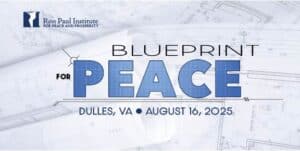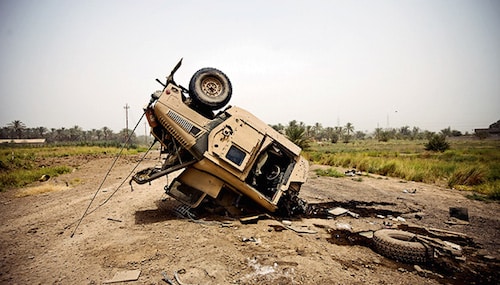There is a new entrant in the already crowded field of Israeli Lobby funded groups opposed to an agreement with Iran over its nuclear program. It is the “wounded warriors” and their families denouncing the perfidious Persians. The first salvo was fired on August 4th in a letter to Rupert Murdoch’s New York Post from the daughter of an Army Lieutenant Colonel killed in Iraq by “Iranian weapons,” who concluded that “we are already at war with Iran.”
After the letter ads began to appear in television markets where congressmen considered to be vulnerable to pressure from Israel’s friends were located. The ads were produced by a group called “Veterans Against an Iran Deal,” whose executive director is Michael Pregent, a former adviser to General David Petraeus who is also an “Expert” affiliated with the Washington Institute for Near East Policy (WINEP), an American Israel Public Affairs Committee (AIPAC) spin off. The group has a website which claims that “the Iranian regime murdered and maimed thousands of Americans” but there is no indication who exactly supports it and is providing funding or what kind of following it has.
The group’s first ad featured as a spokesman a retired army Staff Sergeant named Robert Bartlett. In the video, Bartlett, whose face bears the scars resulting from being on the receiving end of an improvised explosive device in Iraq, claims he was “blown up by an Iranian bomb.” In addition to blaming Iran for providing Iraqi insurgents with the weapons that were used to maim him and kill his colleagues he also tells how Iranians would “kidnap kids” and kill them in front of their parents. Per Bartlett, those who deal with Iran will have “blood on their hands” and will be responsible for funding Iranian terror.
It is obviously easy to sympathize with Bartlett for the suffering he has endured as cannon fodder in one of America’s pointless wars, but a little introspection on his part might be in order. Iran did not invade a non-threatening Iraq in 2003. Bartlett’s own government did that. And the bad guys who took aim at Bartlett? They were people defending their homes and families against an invader and lacking tanks they had to resort to homemade weapons. If Sergeant Bartlett really wants to blame someone for what happened to him he would be much better advised to point his finger at ex-President George W. Bush and his close advisers.
Bartlett’s anger is nevertheless understandable, but his claim that he was maimed by Iranian provided weapons should not go unchallenged. In actual fact, it is a lie. In 2005 the Bush Administration began to claim that Iran had been “interfering” in Iraq. The claim, rarely backed up by an substance, was based on suppositions about Tehran’s likely interests regarding its predominantly Shi’ite neighbor and it was little more than an excuse to explain the persistence and intensity of Iraqi resistance to the American invasion.
Sophisticated roadside bombs using shaped charges, initially referred to as Improvised Explosive Devices (IEDs) and subsequently as Explosively Formed Penetrators (EFPs), first appeared in Iraq in the summer of 2004. Initial reports on the weapon in June 2005, stated that it was being used by Sunni insurgents and was likely produced by ordnance experts from the disbanded Iraqi Army. Saddam Hussein’s Iraq had a large army with a sophisticated if limited ability to produce some weapons in its own armories. When the army was foolishly disbanded by the Coalition Provisional Authority, skilled workers who had been employed in the weapons shops were made redundant and took with them the knowledge to make any number of improvised weapons using the materiel that remained in Iraq’s arms storage depots.
The first suggestion that Iran might be involved with such weapons in an attempt to destabilize the situation in Iraq appeared on August 4th, 2005, in a report stating that US soldiers had “intercepted” shaped charges “smuggled into northeastern Iraq only last week.” Shaped charges were the most successful weapons being used against the so-called Multi-National Force headed by the US As northeastern Iraq borders Iran one version of the story stated that “it could not have happened without the full consent of the Iranian government.”
The indictment of Iran as the source of weapons being used by insurgents continued and intensified as the security situation in Iraq deteriorated. Some media coverage attributed the killing of hundreds of American soldiers to Iranian supplied weapons because any death by EFP was immediately attributed to Iran. In spite of the lack of any solid evidence, the largely neoconservative supporters of pre-emptive action against Iran stated specifically that Iran was “killing American soldiers” through its provision of sophisticated weaponry. A nearly hysterical progress report given to Congress by General David Petraeus and Ambassador Ryan Crocker on April 8, 2008 went even farther, claiming that Iran was responsible for most of the violence occurring in Iraq.
But the argument about Iranian involvement in Iraq was itself logically inconsistent, something that Crocker and Petraeus should have understood. The Iraqi insurgency in the period 2004-2006 was largely Sunni and hostile to Iran. That the Iranians would be supplying the Sunnis or that the Sunnis would have sought such aid was implausible.
The first rule of verification is who, what, when, where, why. While there continued to be numerous unsourced reports suggesting that Iran was supplying weapons to militias there was not a single bit of evidence identifying weapons that were unambiguously traced to Iran on a given day and at a given location that were used to kill Americans. Nor was there ever a credible report on how many alleged Iranian manufactured weapons were actually found in Iraq. Iranian weapons for the export trade were at the time relatively freely available in Asian secondary arms markets. If only a few weapons of uncertain provenance were found it would be difficult to imagine a systematic government supported attempt at smuggling in arms.
A chain of custody whereby the weapons can be seen to move from the Iranian government through channels controlled by that same government into the hands of insurgents and militias with the intent to use the weapons against the occupation forces is a sine qua non for claiming Tehran’s interference. As the United States controlled the ground inside Iraq smuggling mechanisms would have been identifiable using intelligence and police resources, even if the Iranians were attempting to conceal the process. This is particularly true as linking Iran to the weapons flow would have been a high priority objective for the multinational force and for the reconstituted Iraqi police.
As Sergeant Bartlett notes, the weapon of choice for the insurgency was indeed a “bomb” the EFP, which was frequently deployed along roadsides against American armor. The EFP is very simple to make. It consists of a concave copper disk that is placed at the top of a tube. At the bottom of the tube is a military grade plastic explosive charge attached to a detonator. The detonator causes the explosive to go off, the heat and explosive power turning the copper disk into a molten jet of metal that can penetrate as much as eight inches of steel.
The claim that EFPs deployed in Iraq originated in Iran accepted in part that the EFP was actually a sophisticated weapon that could not be produced by Iraqis without Iranian assistance but there are problems with that assumption. The American military knew perfectly well that the Iraqis were more than capable of making the weapon because both US and British forces captured machine shops assembling such devices. The weapon can, in fact, be made by any reasonably competent machine shop that has a metal lathe and access to explosives. US Army Special Forces training manuals that provided instructions on making and using shaped charges were available on the internet at the time of the Iraq War. They have since been deleted but the information is still available online.
The often repeated charge that Iran had been responsible for 170 deaths of American soldiers in Iraq, leading inevitably to the still to be heard “they are already at war with us” rhetoric, comes from assuming that every EFP used in Iraq was Iranian in origin and that Tehran was complicit in providing the weapons or their components. There is no actual evidence for either assertion. As noted above, the EFP material could be produced locally without any Iranian government involvement in the process.
A related specific claim that as many as fifty Iranian Revolutionary Guards were on the loose in southern Iraq equipping Shi’ite militias with EFPs and training them in their use was a media invention that was never actually verified but became part of the folklore of war in Iraq. One assumes that the US and Iraqi authorities would have made a major effort to detain such individuals, which suggests that their existence was completely apocryphal.
Sergeant Bartlett, given all of the above, I hate to disillusion you, but there is no evidence whatsoever that Iran did anything to you either directly or indirectly. I don’t know if anyone is paying you to come forward to denounce an agreement reached by our president with Iran but your timing appears to be coordinated with the much broader well financed effort to denigrate the Iranians in every way possible. Your expressed hatred for a nation with which the United States has never been at war might only serve to bring about yet another conflict in the Middle East, quite likely far more catastrophic and pointless than the military intervention that maimed you and killed your buddies. Do you really think that is a good idea?
Reprinted with permission from Unz.com.



